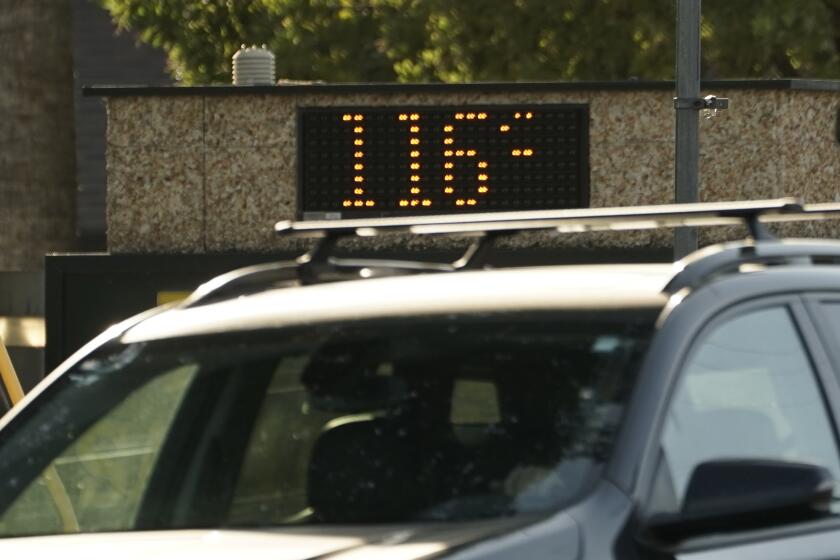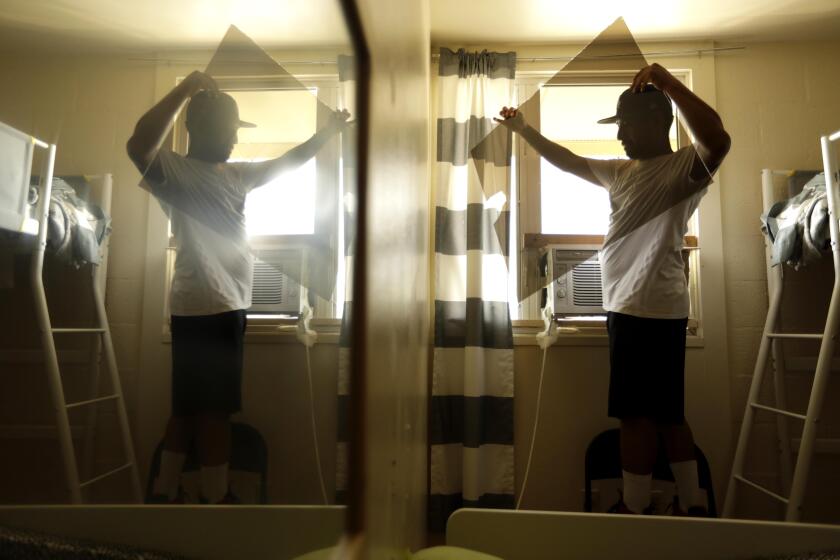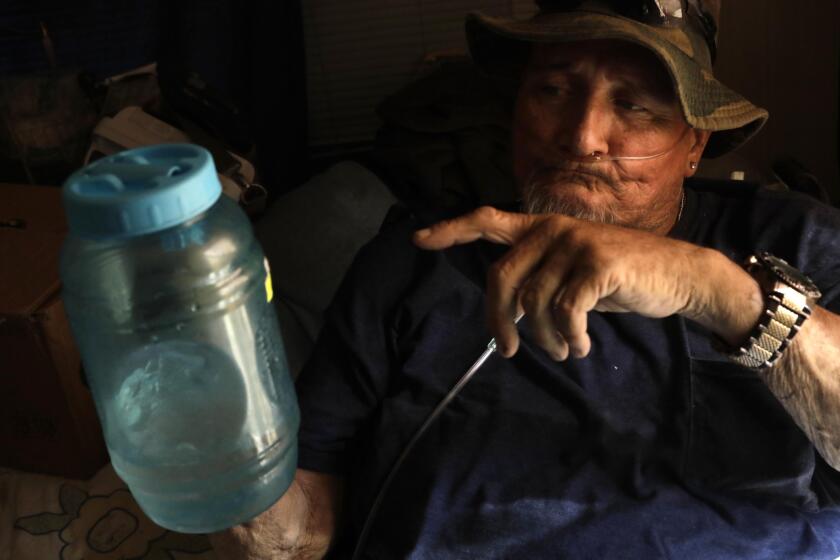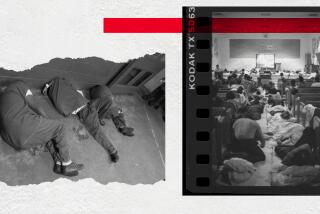Changing climate is turning prisons into torture chambers and death traps

- Share via
The purpose of the juvenile justice system in Louisiana is not to punish but to rehabilitate. But dozens of young Louisianans were transferred nearly a year ago to the vacant former death row of the notorious adult maximum security state penitentiary known as Angola, where they have suffered through a summer of record-breaking heat — without air conditioning, according to plaintiffs in a lawsuit against the state. As temperatures outside reached triple digits for days, conditions inside the windowless cells became unbearable.
This is not rehabilitation, and it’s not even punishment. It is torture.
Editorial: The 2022 heat wave killed 395 Californians. It shouldn’t have taken so long to find out
We need better, more timely information on death and illness caused by heat waves, the deadliest climate-fueled disasters. Not just one off reports nearly a year after the fact.
Adults are in prison for punishment as well as rehabilitation, but shouldn’t have to endure such conditions any more than teenagers should.
Yet intense heat has so affected imprisoned Louisiana adults that officials have had to step up suicide watches. At the Mississippi State Penitentiary in Parchman, a U.S. Department of Justice investigation found indoor temperatures reaching 145 degrees last year. In Texas, where 70% of prison living quarters reportedly lack air conditioning, incarceration becomes execution, as climate change drives already blistering summer temperatures even higher.
Editorial: Coronavirus makes jails and prisons potential death traps. That puts us all in danger
Soap is restricted and hand sanitizer is contraband at correctional facilities. We need to stop admitting people accused of low-level crimes.
One study found an average of 14 heat-related deaths a year in Texas prisons lacking air conditioning, and none in the relatively few prisons with A/C. The state has seen an average of two prison deaths a day this summer, many of them heat-related despite official insistence that the heat is not to blame.
Lack of adequate cooling during hot summers has plagued Southern states for decades, but climate change has now made it a problem in Northern states as well — Michigan, Minnesota, South Dakota, Indiana. Brutal heat is especially lethal for aging inmates. It exacerbates already challenging mental health problems, which are rampant in prisons. It alters the effects of some medications. It robs people of sleep. It shortens tempers and increases violent behavior.
Editorial: Climate change is roasting L.A. The city can save lives by requiring A/C in rentals
How can city officials help save lives during heat waves? Make cooling a requirement for habitation, like it is already is for heating during cold weather.
It turns poorly ventilated concrete-and-steel prisons into heat-retaining ovens that don’t cool down at night. Individual fans bought at prison commissaries merely move the hot air around. Desperate residents describe clogging toilets to let the water run so they can lie in it, or soak their clothes in it, or lay their bedsheets in it.
Staff, too, are affected by the unrelenting heat and are more likely to become ill or to respond aggressively to incidents.
At sweltering, non-air-conditioned public schools, parents can at least take their children out of class. Tenants in non-cooled apartments can, at least in theory, go to the mall or an emergency cooling center during a heat wave.
Temperatures continue to rise thanks to climate change. But state officials have moved glacially slow to put protections in place for people toiling during the summer at indoor workplaces like warehouses and factories.
But people in prison, by definition, cannot escape unbearable heat.
To our shame, it has long been part of American culture to accept or even delight in torturous prison conditions. In Maricopa County, Ariz., former Sheriff Joe Arpaio was treated as a folk hero for keeping jail inmates in tents in the desert amid daily summer temperatures of 120 degrees.
The COVID-19 outbreak at San Quentin was predictable because of the prison’s layout and the simple truth that viruses will spread in packed spaces.
But cruelty is explicitly unconstitutional and not part of acceptable prison treatment, no matter what the individuals did to be sent there. A correctional facility is society’s messenger to convicted criminals about humanity and acceptable standards of conduct; at the very least it should provide minimum standards of humane treatment — safety, security, nutrition, medical care, livable conditions. Their punishment is the loss of their liberty. It is not — or rather, no civilized society should ever allow it to be— gratuitous physical or psychological torment.
Those who still scoff at the notion of treating people in prison humanely should also keep this in mind: Most prisoners will one day go free. They will be our neighbors. Better for our own safety and peace of mind to live next door to a person who learned what humanity looks and feels like, rather than one whose body, mind and spirit were subjected to conditions that we do not permit at animal shelters.
Read all of our coverage about how California is neglecting the climate threat posed by extreme heat.
Texas and Louisiana should spend the money to air-condition their prisons. So should every other state. The federal government should offer states incentives to modernize their prison climate systems.
Meanwhile, let’s not be smug in Los Angeles, where jail air conditioning is outdated, and staff have to turn on huge fans to keep the air circulating. And where two people died last winter of suspected hypothermia while thermal underclothes that could have kept them and other inmates warm were withheld.
Like the American dream, the California dream of fresh starts and fair play is undermined by rules that protect privilege and punish poverty.
And let’s also remember that prisoners cannot escape the other ravages of climate change — wildfire smoke, for example, or flooding of the type that briefly threatened the California State Prison at Corcoran this year, on the temporary shore of Tulare Lake.
Prisons cannot operate on the cheap, and climate change is making them even costlier. We will pay, one way or the other — either by making them slightly more humane or by paying wrongful-death verdicts and settlements for accepting the cruel torture of our fellow human beings.
More to Read
A cure for the common opinion
Get thought-provoking perspectives with our weekly newsletter.
You may occasionally receive promotional content from the Los Angeles Times.
















